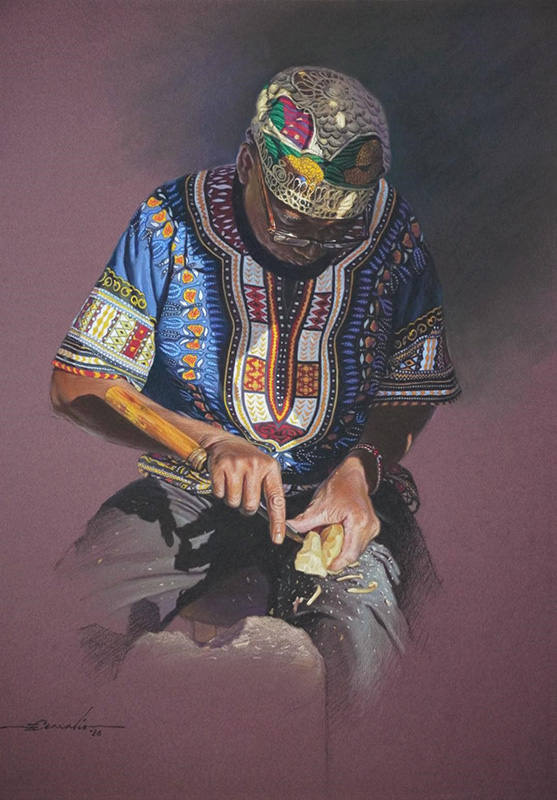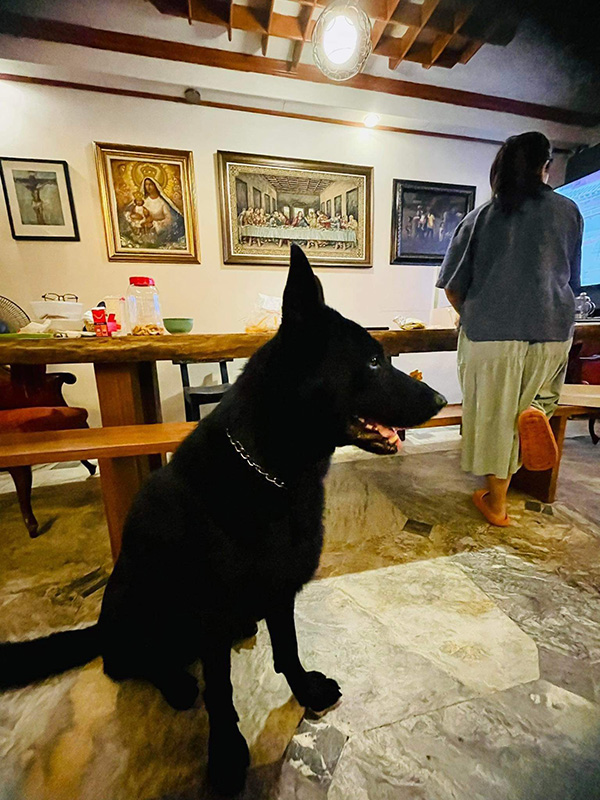
Art and Travel: An Interview with Artist Gary Carabio and Art Collector Ed Arriola
by Hyacinth Shane M. Baliña
Entangled by the riveting tug of art, realist painter Gary Carabio and art collector Ed Arriola dispense their shared experience of how their traversals across the globe widened their perception of art.
While a change in scenery welcomes upcoming changes, some things just stay the same. Coming from an islet of Bantayan, artist Gary Carabio displayed an avid interest in depicting boats. Despite leaving the country and moving to Florida, USA, his fondness for illustrating boats remained—taking it with him as a reminder of home.
The artist talked about how the subjects he found interesting to paint back home did not change when he moved abroad. “The only thing that was different was the setting,” he stated.
Starting his art career in the Philippines, “Gary” Carabio imparted his realizations on how the value of art differs across continents. He talked about how he had to compromise his prices many times as an artist living in the Philippines. “They don’t haggle as much internationally,” he shared.
He explained how it is a common occurrence for Filipino artists to compromise their prices and went on to say that he cannot judge them for it, having to go through the same thing himself. His experience as a migrant widened his views on how different people value art. The artist also expressed how unbelievable it still is for him to have sold so many of his pieces.

Craftsman by Gary Carabio, 2023
Sharing the same enthusiasm for art is an art collector who began his compendium of artworks during the Tubô Cebu Art Fair in 2019. Reminiscing the roots of his first artwork purchase, art collector Ed Arriola talks about the importance of visiting art fairs. “It makes you realize that there is more to it than just expensive stuff,” he stated.
After being enchanted by a Santo Niño painting with deep-set eyes, he began collecting art pieces. Most of them are made by Cebu-based artists. Known or unknown, the art collector does not mind as to him, nothing outweighs the emotional connection he has with an artwork.

Inside the house of Ed Arriola. A few of his art collections decorate the wall. (Photo by Ed Arriola)
Further into his journey of collecting art, Ed Arriola talked about how the stories portrayed in different artworks differ from one place to another. “The stories are different,” the art collector stated.
Despite owning works from Manila-based artists, he is admittedly more drawn to local pieces for they remind him of his place and his childhood. He is also drawn to religious themes due to his experience of staying in the seminary for eight years. The local subject he found most intriguing is the different depictions of the Santo Niño. “It is very Cebuano,” he said.
He discussed how the Santo Niño retains its symbolism despite the variety of interpretations artists give it, therefore, establishing a tantalizing connection with him and the subject.

Some personal favorites by the collector (from left to right): A Christmas Wish by Cesar Cabase Castillo, Senorita Hustisya by the same artist, and Precious to the Max by Celso Duazo Pepito
Compiling the experiences of how these two art enthusiasts came to form their perception about art based on their travel experiences leads us to think that sometimes, the places we are immersed in may act as a weighing scale of how people value art.
In “Gary” Carabio’s experience, art was priced differently from his home country and the place he moved to. His background as an artist immigrant led him from compromising his prices to being valued as an artist internationally. In addition to that, the cultural value and essence of his works were retained despite moving away from his country of origin.
Meanwhile, in the experience of the art collector Ed Arriola, the stories of art pieces differ from one place to another. Despite coming across different artworks outside the city of Cebu, he prefers works made by local Cebu artists as they remind him of hometown.
Where do art and travel now intersect? The meeting point of the two lies in the “experience.” The two were able to form their individual beliefs on art based on their independent experiences. While different cultures may value and characterize art differently, it retains its peculiar ability to be perceived through the lived experience of the artist and its audience.
